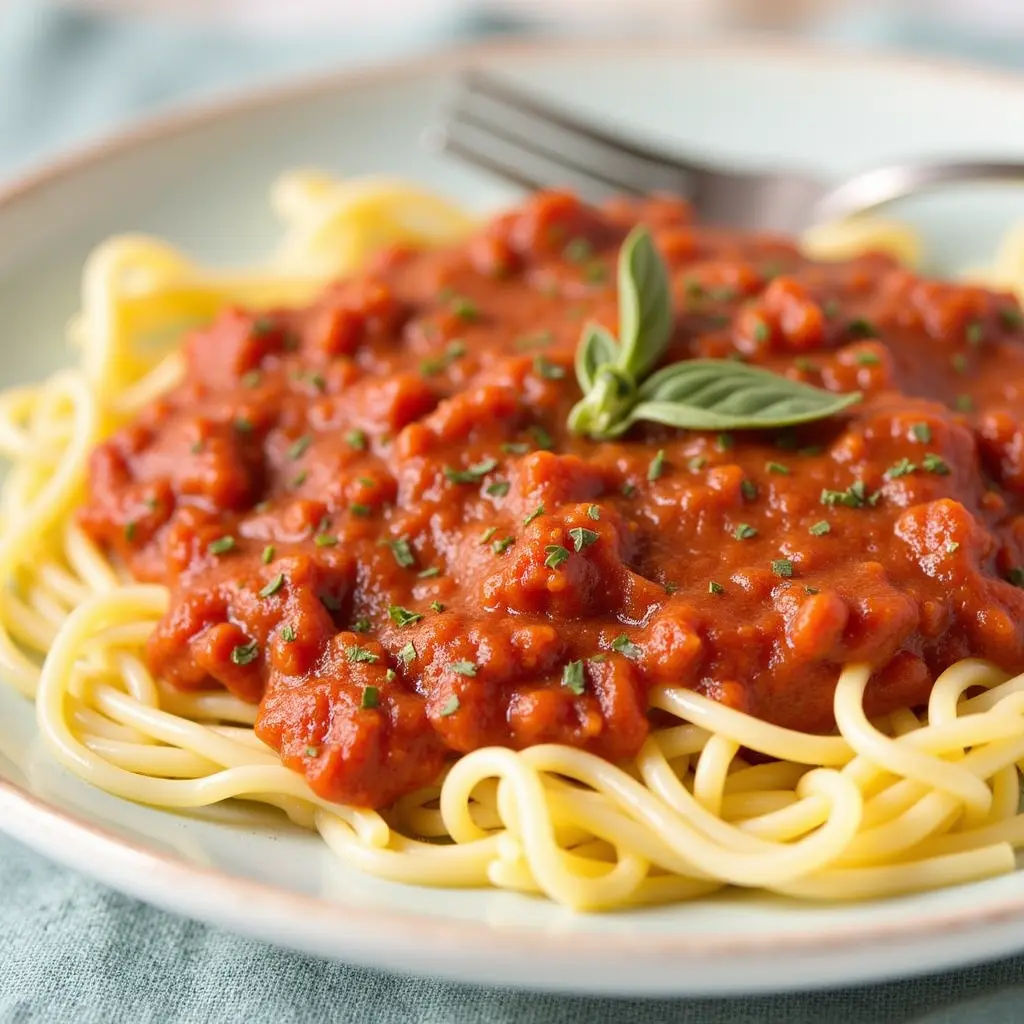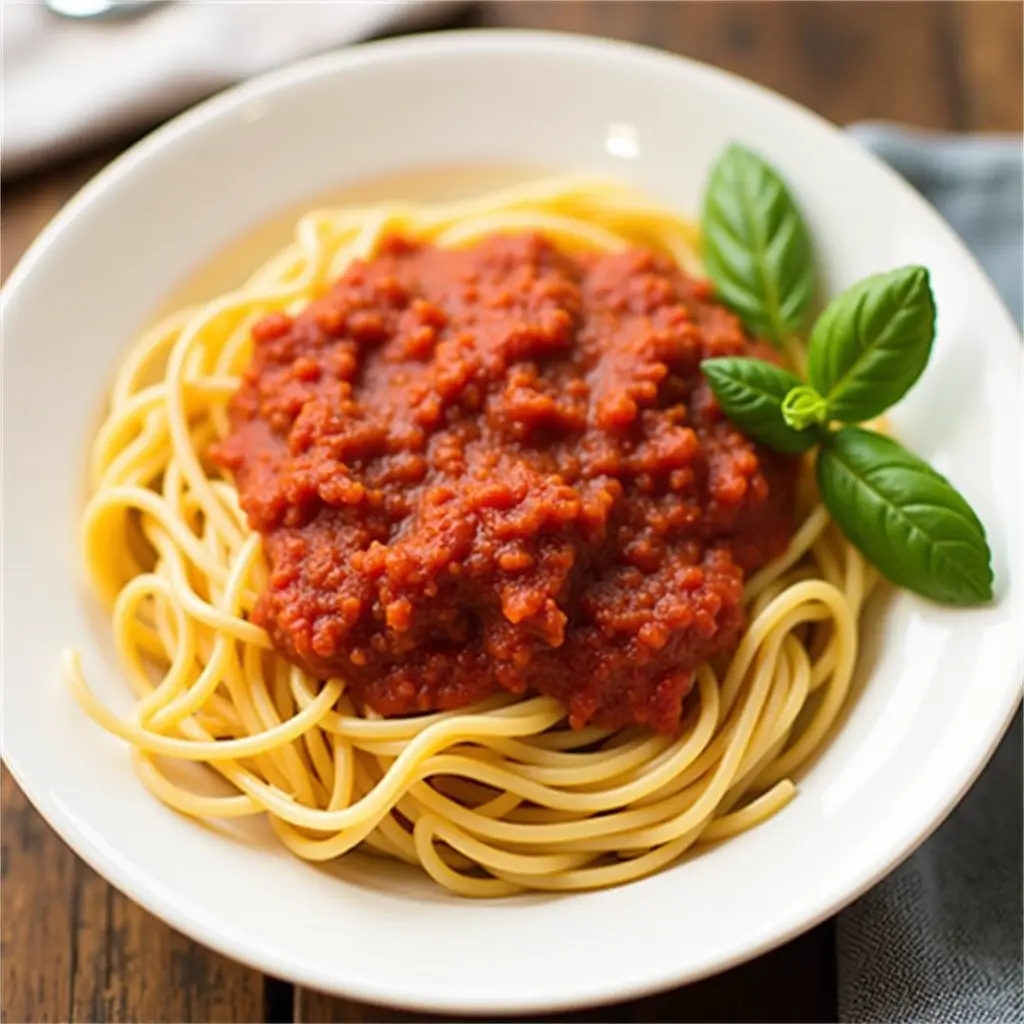
If you’re looking for a delicious and authentic Mediterranean farmhouse spaghetti sauce recipe, you’ve come to the right place. This hearty and rich sauce is packed with fresh vegetables, herbs, and a variety of spices that will transport your taste buds straight to a rustic farmhouse on the Mediterranean coast. Perfect for pasta lovers, this recipe brings the Mediterranean flavor to your home and is versatile enough to use in other dishes. In this article, we’ll dive deep into the ingredients, preparation steps, and the secrets behind making this incredible sauce, along with some helpful tips and answers to frequently asked questions.
Ingredients for the Mediterranean Farmhouse Spaghetti Sauce Recipe
The key to a great Mediterranean farmhouse spaghetti sauce recipe is using fresh, high-quality ingredients. Here’s what you’ll need to make this classic dish:
- Olive Oil: High-quality extra virgin olive oil gives the sauce a rich base and authentic flavor.
- Onions and Garlic: These aromatic vegetables form the flavorful foundation of the sauce.
- Tomatoes: Fresh ripe tomatoes are essential for a rich, thick sauce. You can also use canned crushed tomatoes if fresh ones are not available.
- Bell Peppers: Red and green bell peppers add sweetness and a slight crunch to the sauce.
- Zucchini: This adds texture and nutrition, making the sauce heartier.
- Carrots: Carrots bring natural sweetness to balance the acidity of the tomatoes.
- Herbs: Fresh basil, oregano, thyme, and rosemary bring authentic Mediterranean flavors.
- Red Wine: A splash of red wine deepens the flavors, adding richness to the sauce.
- Salt and Pepper: Essential for seasoning and bringing out all the other flavors.
- Optional Ingredients: Capers or olives for an extra briny twist, and red pepper flakes for a hint of spice.
Ingredient Tips
- Tomatoes: For the best flavor, use San Marzano tomatoes if you can find them. They are sweeter and less acidic compared to other varieties.
- Herbs: If fresh herbs are not available, dried ones will work too. Just reduce the quantity to about a third since dried herbs are more concentrated.
- Red Wine: You can substitute the red wine with vegetable broth or water if you prefer to keep the recipe alcohol-free.
How to Prepare Mediterranean Farmhouse Spaghetti Sauce
Step-by-Step Cooking Process
- Sautéing the Vegetables: Begin by heating olive oil in a large pan over medium heat. Add finely chopped onions and cook until they are soft and translucent. Then add minced garlic and sauté for an additional minute until fragrant.
- Adding the Vegetables: Add diced bell peppers, zucchini, and carrots to the pan. Cook for about 5-7 minutes, stirring occasionally, until the vegetables are slightly tender.
- Tomatoes and Seasoning: Stir in the chopped tomatoes, followed by a splash of red wine. Allow the mixture to simmer for about 10 minutes to let the wine reduce slightly. Add fresh herbs like basil, oregano, thyme, and rosemary. Season with salt and pepper to taste.
- Simmering the Sauce: Reduce the heat to low and let the sauce simmer for 20-30 minutes, allowing all the flavors to meld together. Stir occasionally to prevent sticking. If the sauce is too thick, you can add a bit of water to adjust the consistency.
- Finishing Touches: Add a handful of fresh basil leaves and stir. For an extra Mediterranean touch, add capers or chopped olives. Taste and adjust seasoning as needed.
Cooking Tips for Perfect Sauce
- Cooking Time: Letting the sauce simmer for a longer period allows the flavors to deepen. If you have time, let it cook for up to an hour.
- Consistency: If you prefer a smoother sauce, use an immersion blender to blend it to your desired consistency.
- Balancing Flavors: If the sauce tastes too acidic, add a pinch of sugar or a grated carrot to balance it out.
Serving Suggestions for Mediterranean Farmhouse Spaghetti Sauce Recipe
Classic Pairings
- Pasta: This sauce is perfect for any type of pasta, from spaghetti to penne. Cook the pasta according to the package instructions and mix it with the sauce before serving.
- Zoodles: For a low-carb option, serve the sauce over zucchini noodles (zoodles). It pairs wonderfully with the freshness of the zoodles and makes for a lighter meal.
- Polenta: Serve this rich sauce over creamy polenta for a comforting dish that highlights the Mediterranean flavors.
Creative Ways to Use the Sauce
- Stuffed Bell Peppers: Use this sauce as a base for stuffed bell peppers by mixing it with rice and filling halved bell peppers before baking.
- Eggplant Parmesan: Use the sauce for eggplant parmesan, layering it with slices of breaded eggplant and cheese before baking.
- Pizza Sauce: The thick, flavorful nature of this sauce makes it ideal for use as a pizza sauce.
Health Benefits of the Mediterranean Farmhouse Spaghetti Sauce
Nutritional Highlights
- Rich in Antioxidants: Tomatoes are a great source of antioxidants like lycopene, which has been linked to various health benefits, including reducing the risk of heart disease.
- Heart-Healthy Fats: Olive oil provides heart-healthy monounsaturated fats, which help maintain healthy cholesterol levels.
- High in Fiber: The vegetables in the sauce provide dietary fiber, which aids in digestion and promotes a feeling of fullness.
- Low in Sugar: Unlike many store-bought sauces, this homemade version has no added sugars, making it a healthier option for those watching their sugar intake.
Customizing for Dietary Needs
- Vegetarian and Vegan-Friendly: This recipe is completely plant-based, making it a great option for vegetarians and vegans.
- Gluten-Free: The sauce itself is gluten-free, and you can easily pair it with gluten-free pasta or other gluten-free bases.
- Low-Carb: To make it low-carb, serve it over zoodles or other vegetable-based noodles instead of traditional pasta.
Questions About Mediterranean Farmhouse Spaghetti Sauce Recipe
Can I Freeze Mediterranean Farmhouse Spaghetti Sauce?
Yes, this sauce freezes very well. Allow it to cool completely, then transfer it to an airtight container or freezer bag. It will keep in the freezer for up to 3 months. When you’re ready to use it, thaw in the refrigerator overnight and reheat gently on the stovetop.
How Long Can I Store the Sauce in the Refrigerator?
You can store this sauce in an airtight container in the refrigerator for up to 5 days. Make sure it is fully cooled before storing to maintain freshness.
Can I Use Canned Tomatoes Instead of Fresh?
Yes, canned tomatoes can be used if fresh tomatoes are not available. Opt for high-quality canned crushed tomatoes for the best flavor. San Marzano tomatoes are a good choice for a rich, authentic taste.
What Can I Substitute for Red Wine?
If you prefer to skip the red wine, you can use vegetable broth or water as a substitute. The wine adds depth to the sauce, but the flavor will still be delicious without it.
How Can I Thicken the Sauce?
If the sauce is too thin, let it simmer uncovered for an additional 10-15 minutes to allow excess moisture to evaporate. Alternatively, you can add a tablespoon of tomato paste to thicken it.
How Can I Make the Sauce Spicier?
To add more heat to your sauce, include red pepper flakes when sautéing the vegetables. You can adjust the amount based on your desired level of spiciness.
Tips for Storing and Reheating Mediterranean Farmhouse Spaghetti Sauce Recipe
Best Practices for Storing
- Cool Completely: Always let the sauce cool completely before storing it in the refrigerator or freezer. This helps prevent condensation, which can dilute the flavor.
- Portioning: If you plan to freeze the sauce, consider portioning it into smaller containers. This makes it easier to thaw just the right amount you need for a meal.
Reheating Tips
- Stovetop: Reheat the sauce over low heat on the stovetop, stirring occasionally until it is heated through.
- Microwave: You can also reheat individual portions in the microwave. Heat in 30-second intervals, stirring in between, until the sauce reaches your desired temperature.
Adding Fresh Flavor When Reheating
When reheating the sauce, add a handful of fresh herbs like basil or a drizzle of olive oil to brighten up the flavors and give it a freshly made taste.

